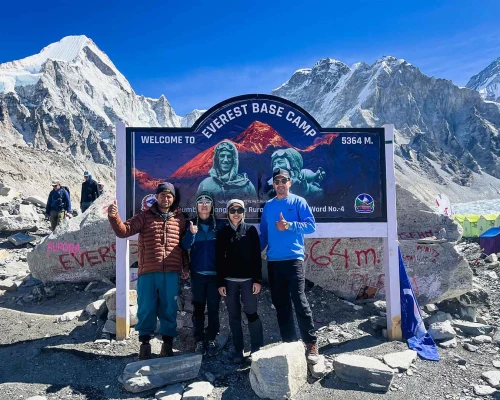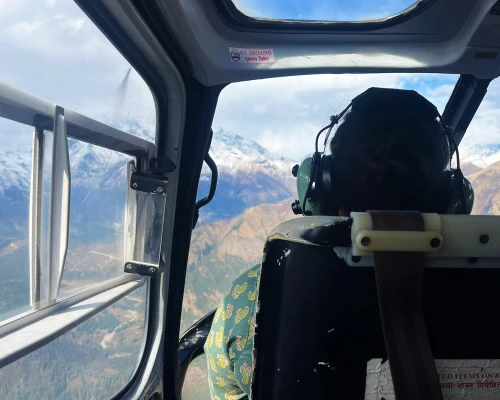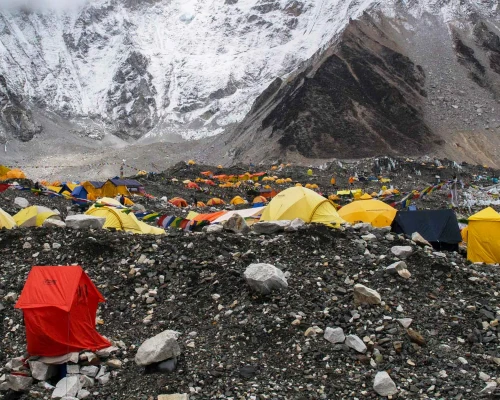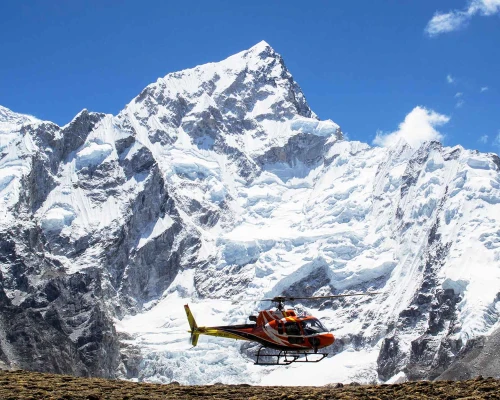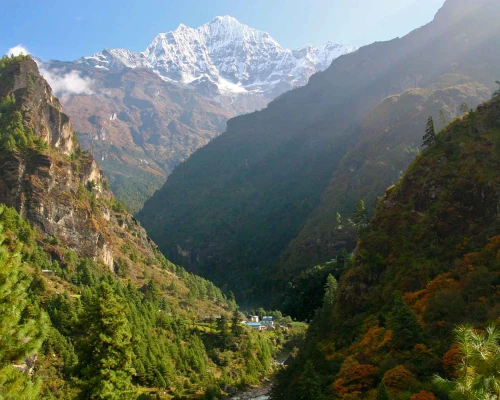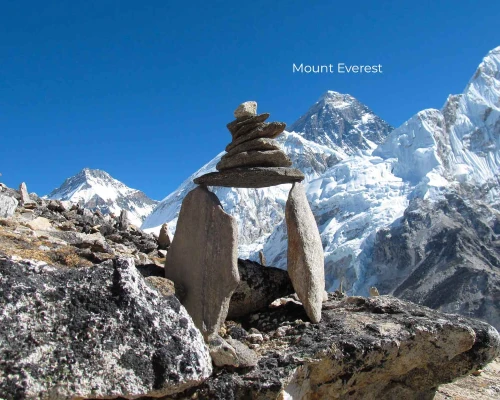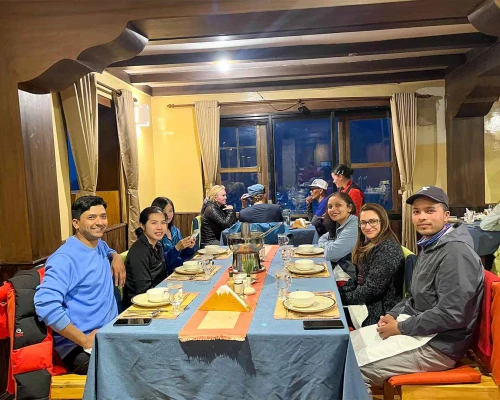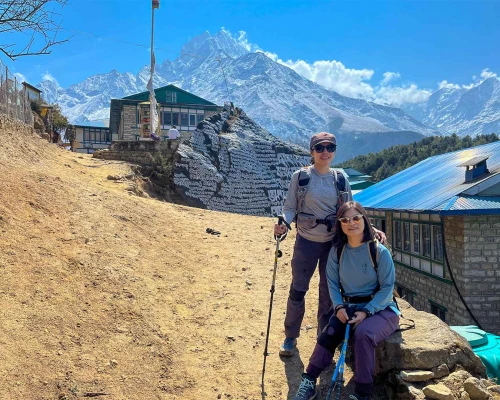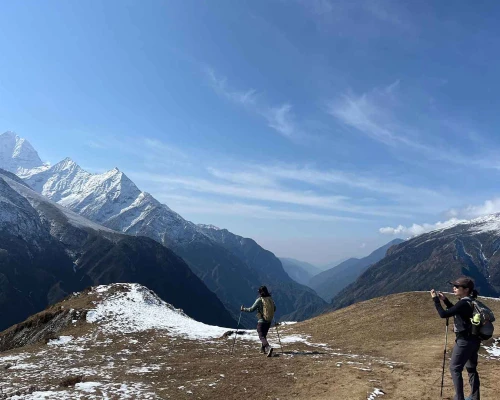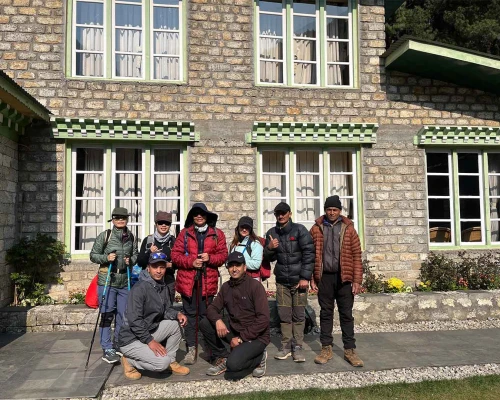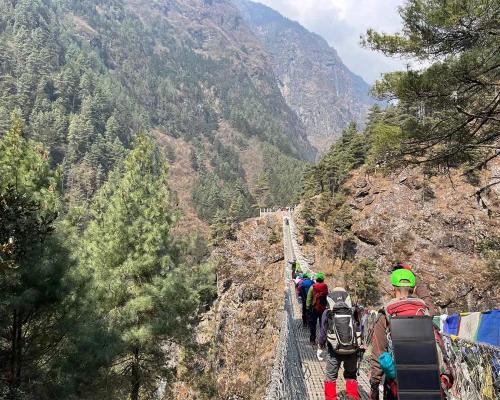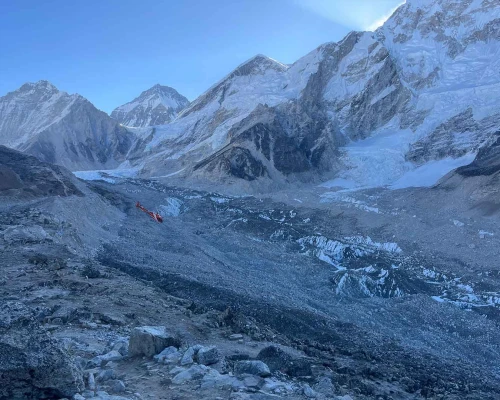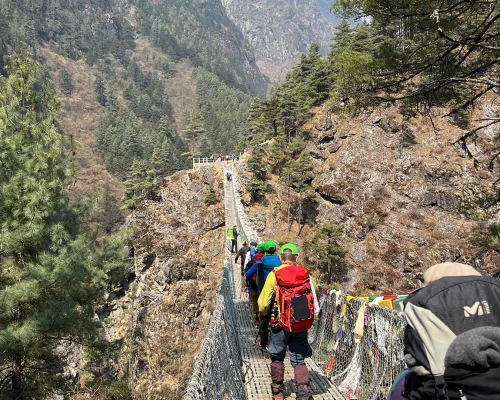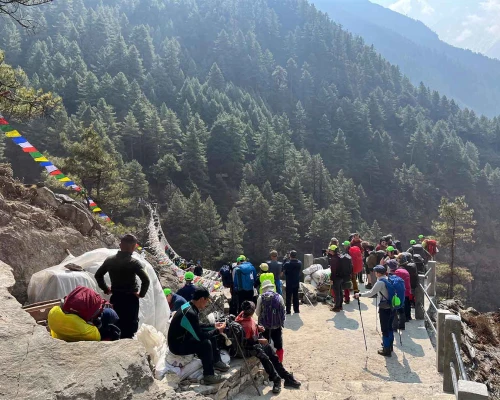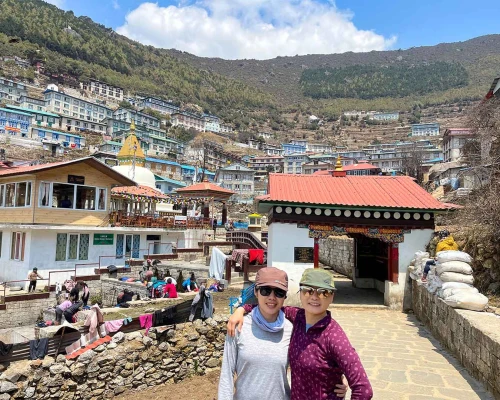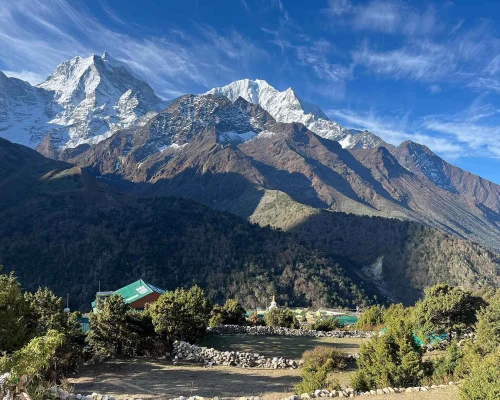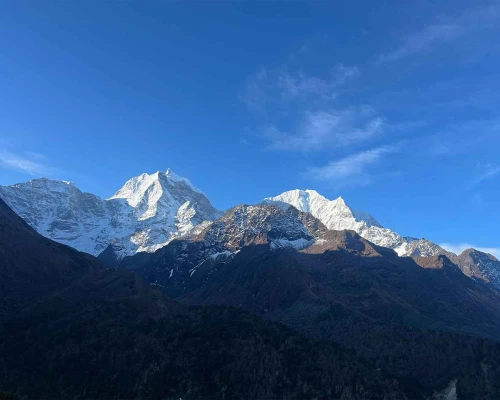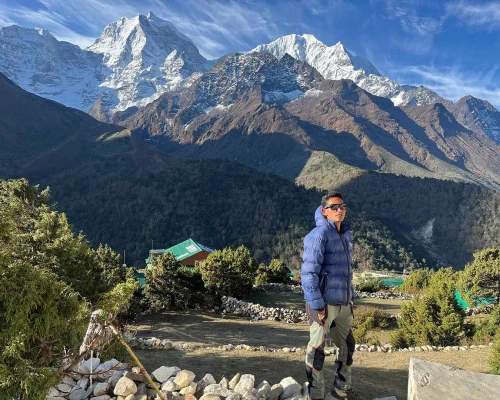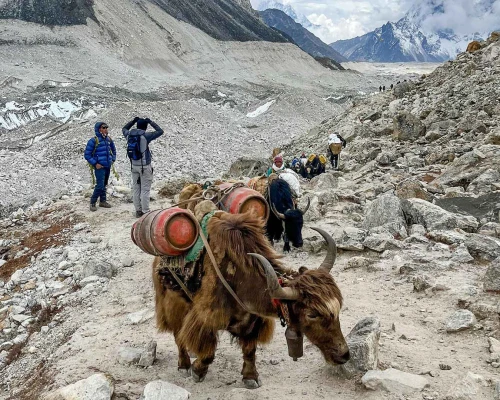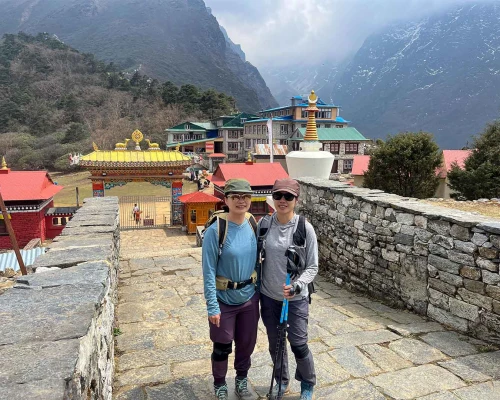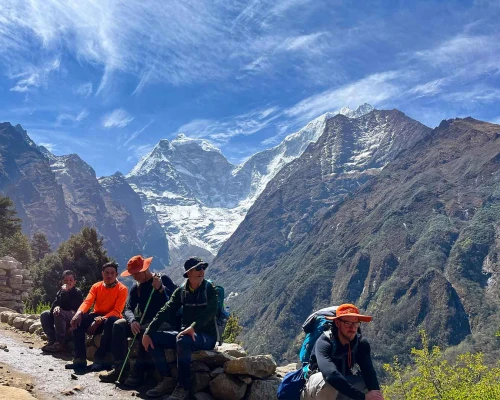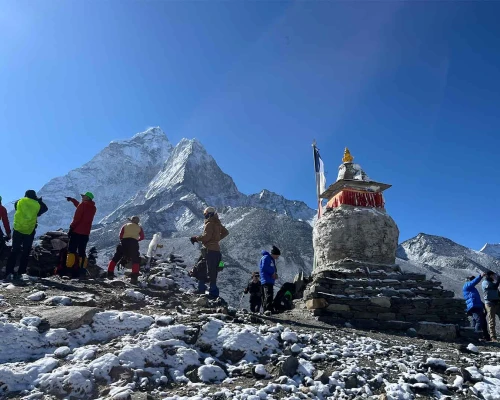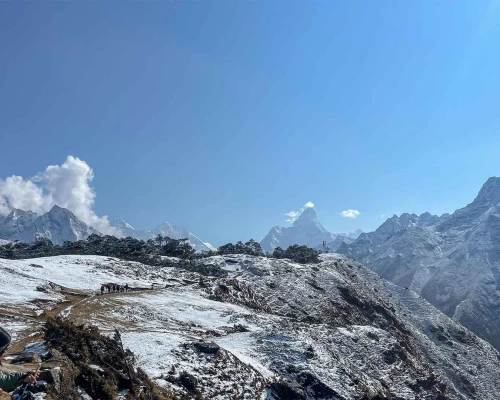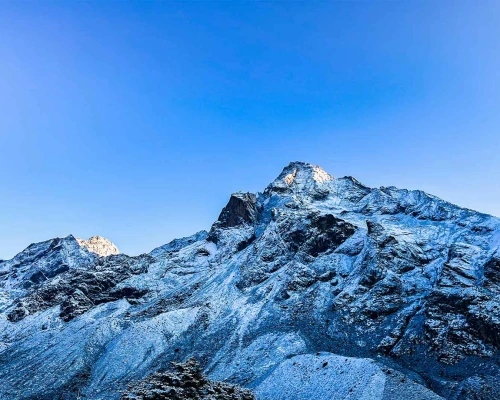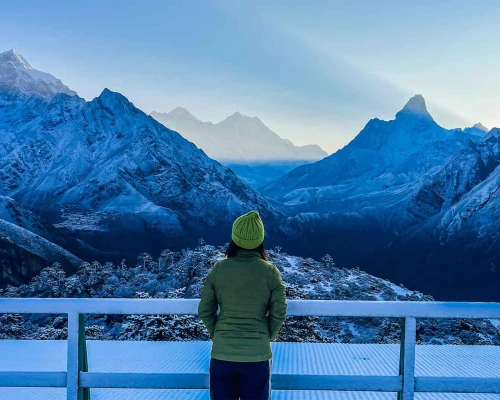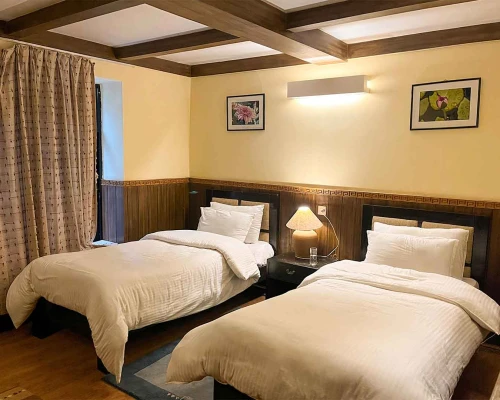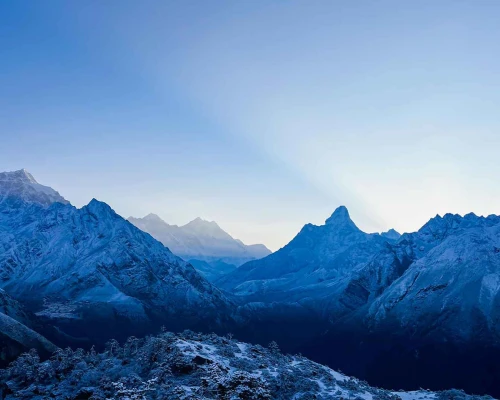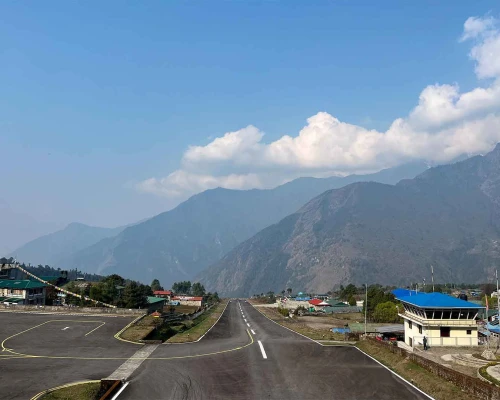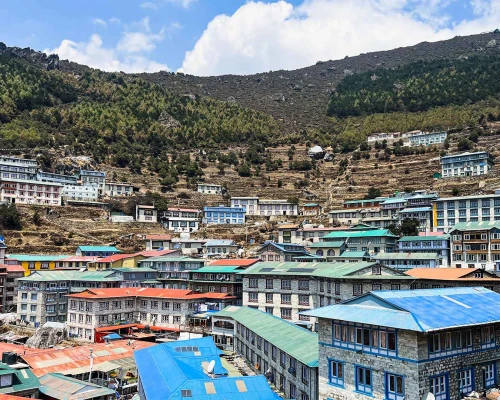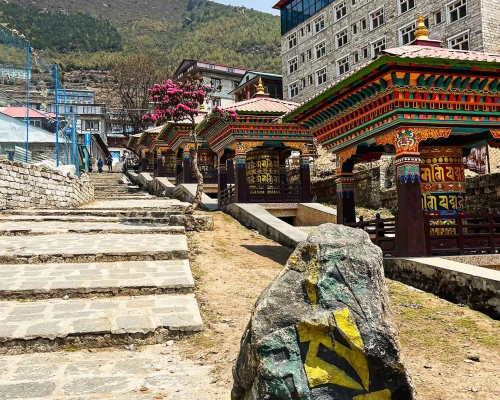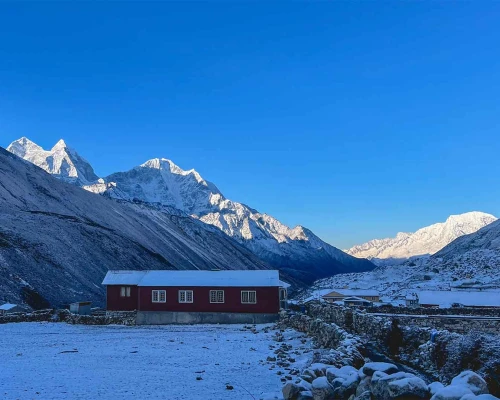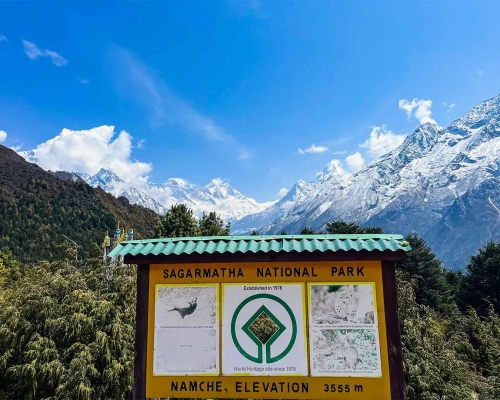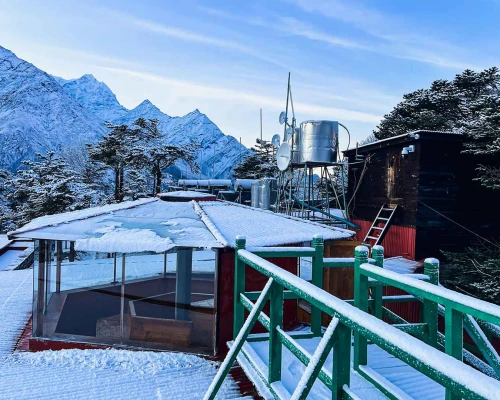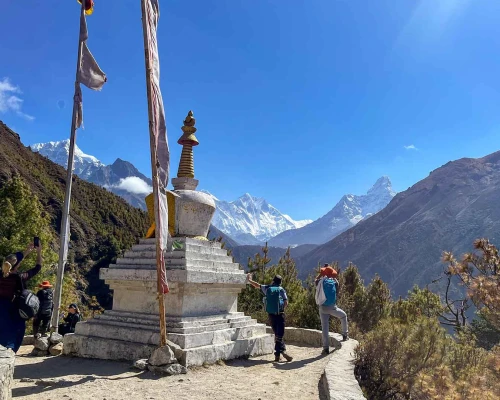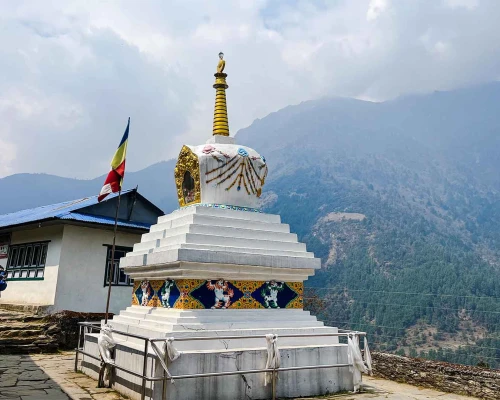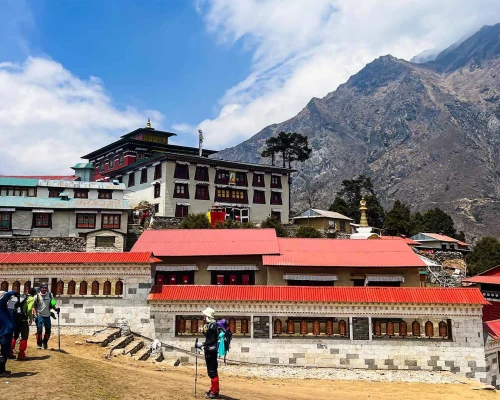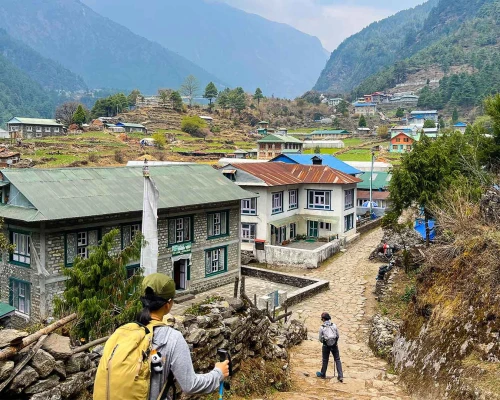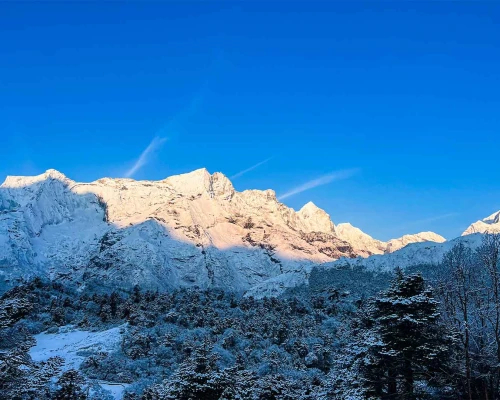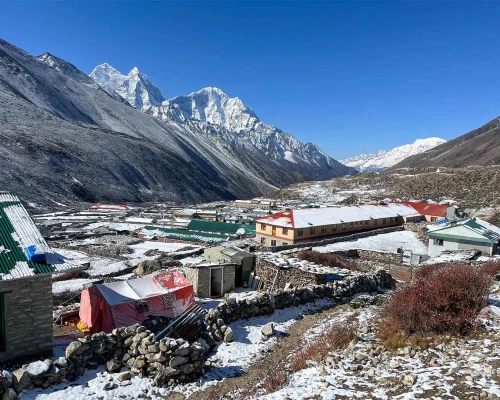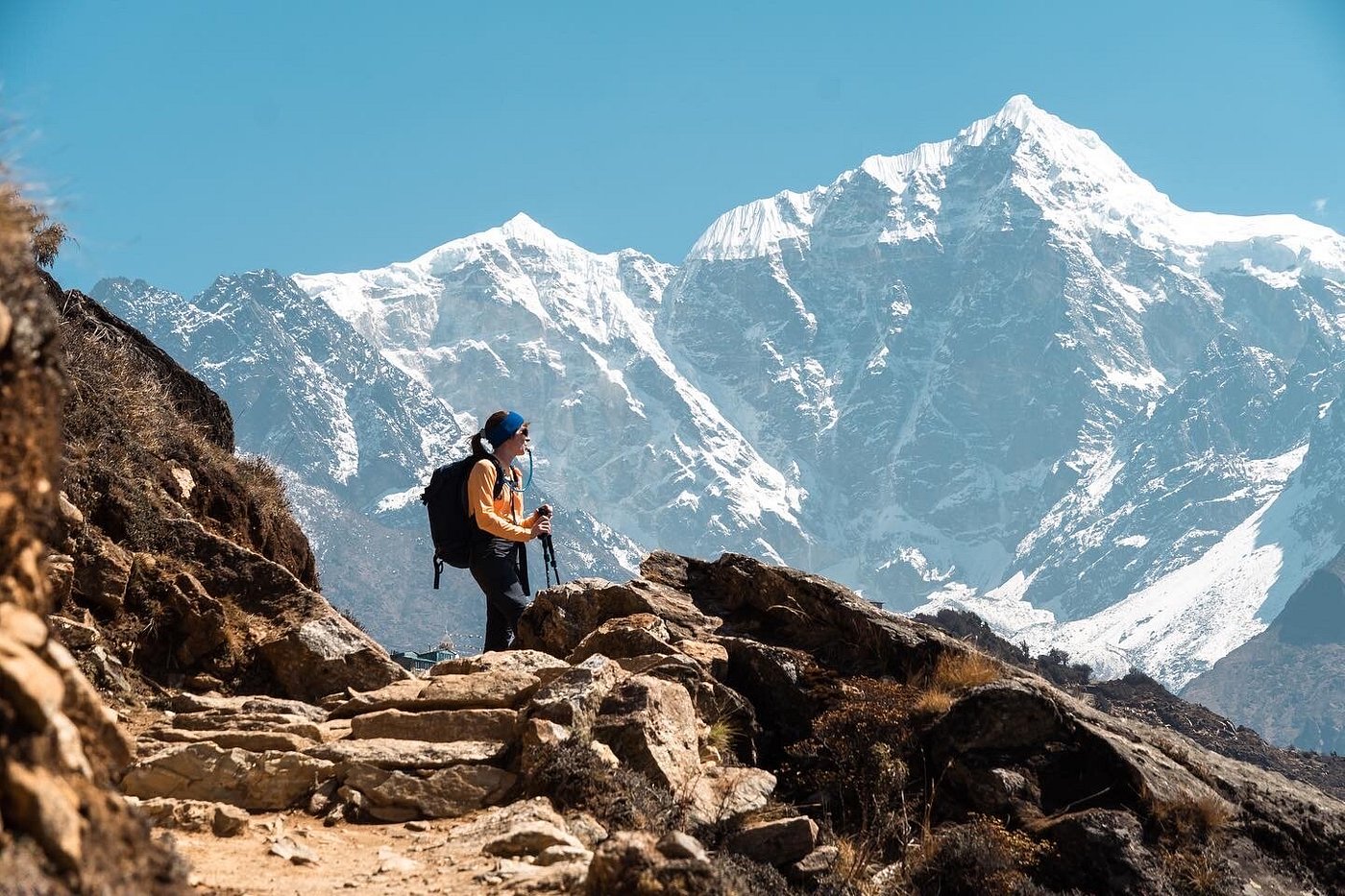Overviews of Everest Base Camp Trek Helicopter Return Back to Kathmandu - 11 Days (KTM - KTM)
Everyone desires to see the close view of Mount Everest and its surrounding peaks. Even the mere thought of seeing Mount Everest and its surrounding peaks can excite some people, but what if we offer an exceptional experience that would set your regular Everest base camp trek apart?
Perhaps there is something more thrilling than trekking to base camp? Yes, you're correct. It's a blend of both trekking and helicopter tours. Combining two different journeys into a single trek is undoubtedly the best deal available.
Everest base camp trek with helicopter return 11 days is fusion of trek and base camp heli tour blend with thrilling adventure, luxury, & comfort at best cost. This expedition is also known as the Everest Fly-Out Trek. This trek is specially designed for the trekkers who want to fully experience the trekking journey to base camp but want to skip the trekking bus journey.
The Everest Base Camp helicopter flight journey is an unforgettable experience for trekkers looking to discover the majesty of the Himalayas in an effective manner. This package not only helps hikers in reaching base camp, but it also speeds up their return trip by flying back to Kathmandu.
This Everest helicopter flight tour provides both aerial and land experiences in the Khumbu region. The trek begins in Kathmandu and goes all the way to Kala Patthar via EBC. On the same day, you will return by helicopter with an aerial view of Mount Everest and its surrounding peaks.
What could be more perfect than this trek? You might think it's a bit expensive, but here's the thing: if a little bit more money can buy the heavenly price, then it's an instant bargain.
The highlight of the Everest trek with heli return is definitely its unique combination. Apart from that, it offers a close-up view of Mount Everest. You will get to stand at the Everest base camp and enjoy the surroundings: Kala Patthar viewpoint, monasteries, lush gren forest trail, local people, and many more.
When it comes to the aerial journey, it offers an exceptional bird's-eye view of the mountains, greenery, base camp, local village, the mighty Khumbu Glaciers, and other things.
At Nepal Trek Adventure We have been delivering hiking and helicopter trips for the past 18 years, making us one of Nepal's leading tour providers. Make your journey memorable with our help.
So, what are you waiting for? Book your Everest base camp trek and return by helicopter with us to ensure a memorable and pleasant experience.
Everest Base Camp Heli Trek Attractions
- Breathtaking aerial views of the Himalayan peaks while returning.
- Unique convenience of a helicopter reducing travel time back to Kathmandu.
- Visiting charming villages and monasteries and learning about local traditions along the trail.
- Expertise of experienced guides who ensure your safety, provide insights, and enhance your trekking experience.
- A carefully designed itinerary that includes acclimatization days to help minimize the risk of altitude sickness.
Short Itinerary of Everest Base Camp Heli Trek
Here is the short outline for trekking to Everest base camp with helicopter flight back:
- Day 1: Arrival in Kathmandu. We will pick you up at the airport and take you to the hotel.
- Day 2: Get an early morning regular flight to Lukla (2840 m), which takes about 45 minutes. From there, walk for three to four hours to get to Phakding (2,610 m).
- Day 3: We will hike from Phakding to Namche Bazaar (3,440 m) . The trip will take about 5 to 6 hours.
- Day 4: Acclimatization Day at Namche Bazaar (3,440 m) and Village Exploration
- Day 5: Spend 5 to 6 hours trekking from Namche Bazaar to Tengboche (3,870 m) and visit the Tengboche monastery.
- Day 6: We will trek from Tengboche to Dingboche (4,410 m) for around 5 to 6 hours
- Day 7: Acclimatization Day in Dingboche and exploring the village
- Day 8: We will trek from Dingboche to Lobuche (4,910 m). It will take around 6 to 7 hours.
- Day 9: We will trek from Lobuche to Gorak Shep (5,180 m) and then visit Everest Base Camp (5,364 m) for an hour (7 to 8 hours).
- Day 10: We hiked for approximately 3 hours to reach the summit of Kala Patthar (5,550 m), took a helicopter flight back to Kathmandu
- Day 11: Departure Day. Pick you up from the hotel and drop you off at the airport.
To know more please check detailed Itinerary section.
Is it hard to do the Everest Base Camp Helicopter Return Trek?
An EBC journey that includes a helicopter return is easier than a standard trek. Since this journey combines a hike with a helicopter tour, returning to Lukla via trek will not be necessary after taking a helicopter to Kathmandu from Gorakshep. Because of the trail's rugged terrain and high rise, the first part of the trek might be difficult but the views are breathtaking. The helicopter journey back to Kathmadnu is comfortable and seamless.
Summit the Kala Patthar Peak, Everest Base Camp Return by Helicopter
The Kala Patthar summit is a major highlight of this Everest Base Camp hike with helicopter return. It is located at an impressive elevation of 5,643 meters (18,514 feet) which provides the best views of Mount Everest and adjacent peaks like as Nuptse, Changtse, and the beautiful Lhotse. The pinnacle of Everest is not visible from Everest Base Camp, but Kala Patthar provides a breathtaking view of the mountain's southwest face.
The route to Kala Patthar begins in Gorak Shep, which is the final halt before reaching Everest Base Camp and the Kala Patthar viewpoint. The hike from Gorak Shep to Kala Patthar normally takes 1.5 to 2 hours.
The distance from Gorak Shep to Kala Patthar is just about 2.2 kilometers, but the steep climb and high elevation make it a little bit difficult to trek. Most trekkers choose to start early in the morning to see the stunning sunrise above Everest, which bathes the mountains in golden light. Others choose to start late in the day to watch the sunset.
The views from the top are simply breathtaking. Looking down from this location, you can see the Khumbu Glacier and Everest Base Camp. It makes you feel on top of the world. After reaching the summit of Kala Patthar, hikers typically return to Gorak Shep to prepare for the thrilling helicopter flight back to Kathmandu.
The ride offers a unique view of the Himalayas from above, passing through difficult terrain, deep valleys, and freezing glaciers, making it the ideal way to conclude an incredible vacation.
Everest Base Camp Trek with Helicopter Return Cost
The Everest base camp trek with helicopter return costs $2250 per person on a group sharing basis for the years 2026, 2027, and beyond. This can be done as a group joining from Kathmandu, private trekking, or solo with us.
Our Everest helicopter tour package includes airport transfers, transportation, flights to Lukla, professional guides and porters, lodging, meals, permits, helicopter flight back (sharing basis), and additional services.
The cost of EBC trekking with a helicopter flight varies based on the type of package you choose. We have different price ranges for group joining treks, private treks, and solo treks. Please check group departures by clicking on the ‘Check Departure’ button, or select the ‘Personalised Trip’ button for custom departure options and pricing.
Best Time to Do the Luxury Everest Helicopter Return Trek
The best seasons for the Luxury Everest Helicopter Return Trek are spring (March to May) and fall (September to November). These seasons provide the most steady weather, bright skies, and breathtaking vistas of the neighboring mountains.

The temperatures are ideal for hiking, and the trail is filled with blooming flowers in the spring and brilliant colors in the fall. These surroundings also guarantee smooth helicopter rides, making it the ultimate experience for anyone wishing to combine the luxury of trekking with a gorgeous flight back.
How to Book the Everest Base Camp Trek with Helicopter Return
You can book our 11 days version of iconic Everest base camp trek through our online booking system. We offer daily group departures, and we can accommodate groups ranging from 1 to 25 passengers in a single day. As below,
To Apply Group Joining Tour
Step 1: Click the Check Departures button for departure dates and prices.
Step 2: Select a trip month and date as per your preference. Then click the Book Now button.
Step 3: Select the number of travelers and fill out the booking form accordingly. Then, click the Proceed to Payment button.
Step 4: Nepal Trek Adventures will send you an instant confirmation email after you complete your payment. You are ready to fly on your specific date. Our team will connect with you based on the information you provided when booking the trip.
To Apply For A Private Tour
Step 1: Click the Personalized Trip button for departure dates and prices.
Step 2: Select a trip date as per your preference.
Steps 3 and 4 are similar to group joining (as mentioned above).
Note: You can pay for the trip through credit cards like Visa, MasterCard, American Express, Union Pay, etc. Our online payment system uses 3D Secure Payment Processing with MasterCard SecureCodeTM and is verified by Visa Compliance. Your card details are safe!
Book now and get free t-shirts, caps, and stickers.



